Transiderm-Nitro 5
Transiderm Nitro® 5 / Nitriderm TTS 5mg/24h
(glyceryl trinitrate)

4.
PATIENT INFORMATION LEAFLET
Your medicine is available using the names Transiderm Nitro 5 / Nitriderm TTS 5mg/24h, but will be referred to as Transiderm Nitro 5 in this leaflet.
This product is available in other strengths (Transiderm Nitro 10).
What you need to know about Transiderm Nitro 5
Your doctor has decided that you need this medicine to help treat your condition.
Please read this leaflet carefully before you start to use the patches. It contains important information.
• Keep the leaflet in a safe place because you may want to read it again.
• If you have any other questions, or if there is something you don't understand, please ask your doctor or pharmacist.
• This medicine has been prescribed for you. Never give it to someone else. It may not be the right medicine for them even if their symptoms seem to be the same as yours.
• If any of the side effects gets serious, or if you notice any side effects not listed in this leaflet, please tell your doctor or pharmacist.
In this leaflet:
1. What Transiderm Nitro 5 is and what it is used for
2. Things to consider before you start to use Transiderm Nitro 5
3. How to use Transiderm Nitro 5
4. Possible side effects
5. How to store Transiderm Nitro 5
6. Further information
1. WHAT TRANSIDERM NITRO 5 IS AND WHAT IT IS USED FOR
Transiderm Nitro 5 is a patch which you stick on your skin. The patch contains a supply of glyceryl trinitrate which is released from the patch and absorbed through the skin and into the blood vessels. This is called a transdermal patch. See diagram of patch below.
WATERPROOF BACKING SPECIAL MEMBRANE WHICH CONTROLS
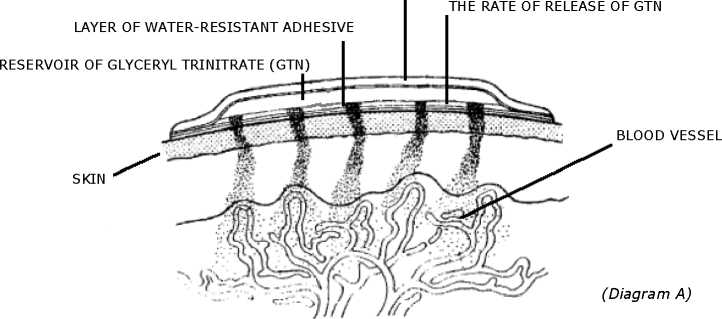
Glyceryl trinitrate, the active ingredient in the patches is one of a group of medicines called vasodilators. These cause blood vessels to relax, increasing the supply of blood and oxygen to the heart and reducing the amount of work the heart has to do.
Transiderm Nitro 5 and 10 are used
• to prevent angina attacks. Angina means a painful tightness in the chest. This is a good description of a typical attack, although the pain may also be felt in the arm or neck. The pain really comes from the heart muscle and is a sign that part of the muscle is not getting enough blood supply for the amount of work it has to do.
Transiderm Nitro 5 is also used in patients who are receiving food or drugs directly into a vein
(intravenously)
• to prevent irritation and the intravenous fluid leaking into the surrounding tissues.
2. THINGS TO CONSIDER BEFORE YOU START TO USE TRANSIDERM NITRO 5
Some people MUST NOT use Transiderm Nitro 5. Talk to your doctor if:
• you think you may be allergic to glyceryl trinitrate or other nitrates or to any of the other ingredients of the patch. (These are listed at the end of the leaflet)
• you have very low blood pressure.
• you have headaches, vomiting or seizures as a result of raised pressure inside the skull.
• you have any problems with your heart because of faulty valves or inflammation.
• you are taking any medicines for erectile dysfunction (male impotence).
If you are hospitalised due to severe dehydration or loss of blood tell the doctor you are using a
Transiderm Nitro 5 patch.
You should also ask yourself these questions before using the patch:
• Have you recently had a heart attack or do you have heart failure or other heart problems?
• Do you suffer from anaemia or lung disease?
• Are you pregnant or trying to become pregnant?
• Are you breast feeding?
If the answer to any of these questions is YES, tell your doctor or pharmacist because Transiderm Nitro 5 might not be the right medicine for you.
Are you taking other medicines?
Transiderm Nitro 5 interacts with a large number of other medicines. Tell your doctor or pharmacist if you are taking any of the following:
• Medicines for depression
• Ergotamine products which are usually given for migraine
• Medicines for erectile dysfunction (male impotence)
• Medicines for high blood pressure or heart problems
• Aspirin or other painkillers called NSAIDs (non-steroidal anti-inflammatory drugs)
• Diuretics ("water tablets")
• Tranquillisers (e.g. chlorpromazine, flupenthixol, haloperidol, clozapine).
Always tell the doctor or pharmacist about all of the medicines you are taking. This means medicines you have bought yourself, as well as medicines on prescription from the doctor.
Will there be any problems with driving or using machinery?
Some people have reported feeling faint or dizzy when they have started to use the patches. You should not drive or operate machinery if you are affected.
Other special warnings
Be careful when drinking alcohol as the patch may affect you more than usual and you might feel faint or dizzy.
You might find that your GTN (glyceryl trinitrate) tablets or spray aren't working as well as they used to. Discuss this with your doctor.
You must tell the doctor or nurse if you are wearing a patch before an MRI scan (Magnetic Resonance Imaging scan to visualise internal organs and tissues of the body) or diathermy treatment (treatment using hot wires) and before electrical treatment on the heart.
3. HOW TO USE TRANSIDERM NITRO 5
It is important to follow what your doctor says about how and when to use your patches. The dose will be on the pharmacist's label. Check the label carefully. If you are not sure, ask your doctor or pharmacist.
The doctor will tell you how often to change the patch. Discard the old patch carefully because it will still contain a little of the active ingredient.
The side of the chest is a suitable place to apply the patch. Choose a different area of skin each time you apply a new patch. Leave several days before you use the same patch of skin again.
How to apply the patch
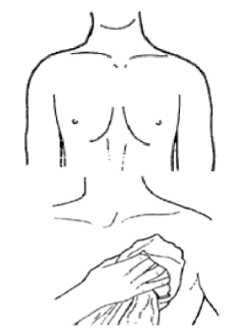
1. Decide where you will put the patch. It is important that you put it on a hairless area to ensure that it sticks well. The side of the chest is recommended.
2. Wash the skin and dry it thoroughly to make sure the patch sticks well. Wait a minute until the skin feels quite dry. Do not use powder.
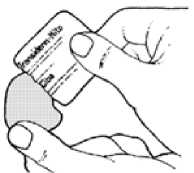
3. Remove one sachet from the box and tear open the sachet at the notch. Use your fingers as cutting with scissors might damage the patch inside. Remove the patch from the sachet.
Peel off the white plastic backing and discard it. Do not touch the sticky surface of the patch.
5. HOW TO STORE TRANSIDERM NITRO 5
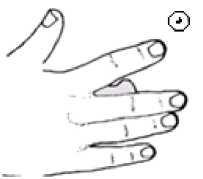
5. Place the sticky side of the patch on the clean skin, press firmly while you count slowly up to five.
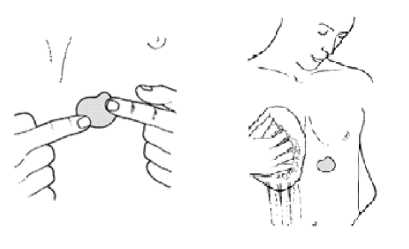
6/7. Run your finger around the edge of the patch to make sure no air or water can get in. If you have applied the patch correctly you can bathe, shower or swim with little risk of the patch coming off.
Do not store your patches above 25°C.
Do not open the sealed sachet until you are going to use the patch.
Keep out of the sight and reach of children.
Do not use these patches after the expiry date which is printed on the carton.
If your doctor tells you to stop using Transiderm Nitro 5 patches, please take any which are left back to your pharmacist to be destroyed. Only keep them if the doctor tells you to. Do not throw them away with your normal household water or waste. This will help to protect the environment.
Return any unused patches to your pharmacist for safe disposal.
If your medicine appears to be discoloured or show any other signs of deterioration, please return to your pharmacist who will advise you.
6. FURTHER INFORMATION
What Transiderm Nitro 5 contains
Each Transiderm Nitro 5 patch contains 25mg of glyceryl trinitrate as the active ingredient.
For each Transiderm Nitro 5, your body will absorb approximately 5mg over 24 hours.
This patch is designed to release the drug through your skin into your body at a slow rate.
The patches also contain the following inactive ingredients: lactose, silicone oil,
polyvinylchloride (PVC), Aerosil 200, Ethylene-vinyl Acetate co-polymer, polyethylene terephthalate,
aluminium, vinyl acetate co-polymer and silicon adhesive.

To prevent angina
The usual dosage for adults and the elderly is one or two patches applied daily. The doctor will have decided which strength of patch you need.
You may be told to wear a patch all of the time or for only part of the day. Don't forget to follow the doctor's instructions exactly.
Do not stop using the patches suddenly without consulting your doctor first.
Sometimes patches are not enough to prevent all of your angina attacks and you may be given tablets as well. Make sure you know when you need to take the tablets.
To prevent skin irritation when you are receiving drugs intravenously (into a vein)
One Transiderm Nitro 5 patch will be applied when the treatment is started and the patch changed every 3-4 days until the treatment is stopped.
Transiderm Nitro 5 is not suitable for children.
What if you forget to change your patch?
If you forget to change your patch, do not worry. Put on a new one as soon as you remember. Then go on as before.
What if you accidentally use too many patches?
If you accidentally apply too many Transiderm Nitro 5 patches, tell your doctor or nearest hospital casualty department immediately. Take your medicine pack with you.
4. POSSIBLE SIDE EFFECTS
Transiderm Nitro 5 patches are suitable for most people. However, like all medicines they can sometimes cause side effects.
The side effects listed below have been reported:
More than 10% of people have experienced
• Nausea (feeling sick) or vomiting (being sick).
Up to 1 in 10 people have experienced:
• Headaches. These will probably wear off after a few days. If necessary you can take mild painkillers e.g. paracetamol.
Up to 1 in 100 people have experienced:
• Reddening, itching or burning of the skin at the site of the patch. Be sure to put your patch in a different place each day.
• Allergic skin reactions such as reddening or itching anywhere on the body.
Up to 1 in 1,000 people have experienced:
• Increased heart rate or palpitations.
• Feeling faint or light-headed on standing, or feeling dizzy.
• Flushing of the face.
If any of the symptoms become troublesome, or if you notice anything else not mentioned here, please go and see your doctor. He/she may want to reduce the dose or give you a different medicine.
Reporting of side effects
If you get any side effects, talk to your doctor or pharmacist. This includes any possible side effects not listed in this leaflet. You can also report side effects directly via: Yellow Card Scheme Website: www.mhra.gov.uk/yellowcard
By reporting side effects, you can help provide more information on the safety of this medicine.
What Transiderm Nitro 5 looks like and contents of the pack
Transiderm Nitro 5 are self adhesive pink coloured patches containing a drug reservoir.
Transiderm Nitro 5 comes in packs containing 30 patches.
Manufacturer
Manufactured by: Famar France, 1, Avenue du Champ de Mars, 45072 Orleans, Cedex, France.
Or
Novartis Pharma S.A.S., 26 rue de la Chapelle, 68330 Huningue, France.
Or
Novartis Pharma S.A.S., 2 et 4, rue Lionel Terray, 92500 Rueil-Malmaison, France.
Procured from within the EU and repackaged by: Doncaster Pharmaceuticals Group Ltd., Kirk Sandall, Doncaster, DN3 1QR.
Product Licence holder: BR Lewis Pharmaceuticals Ltd., Kirk Sandall, Doncaster, DN3 1QR.
PL No: 08929/0157
Leaflet revision and issue date: 23.01.15
Transiderm-Nitro® is a registered trademark of Novartis AG.
To listen to or request a copy of this leaflet in Braille, large print or audio please call 01302 552940 and ask for the Regulatory Department.
Page 2 of 2